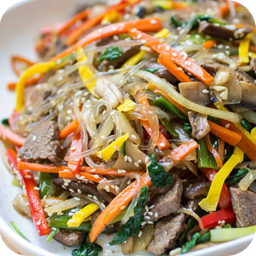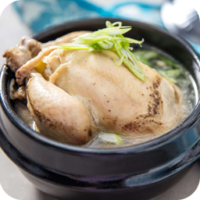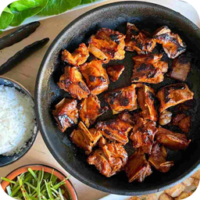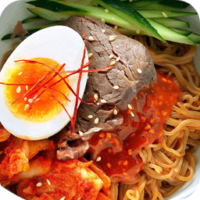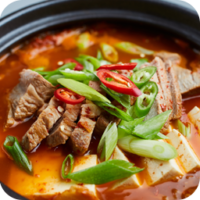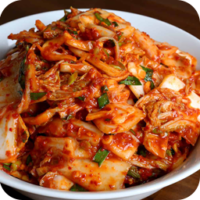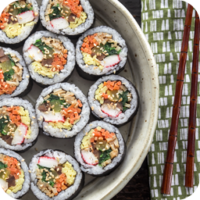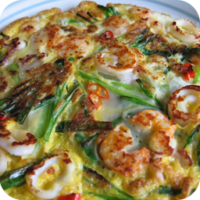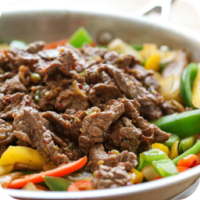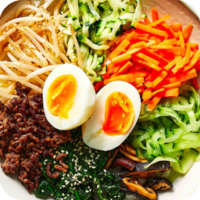Japchae (잡채) is a traditional South Korean dish made from stir-fried glass noodles (also known as sweet potato starch noodles) mixed with vegetables, meat, and a flavorful soy-based sauce. It’s a popular dish served at special occasions like birthdays, weddings, and holidays, and is also commonly enjoyed as a side dish or main course.
Key Ingredients:
- Glass Noodles (Dangmyeon):
- Made from sweet potato starch, these noodles have a chewy, bouncy texture and soak up the flavors of the sauce.
- Vegetables:
- Spinach, carrots, onions, shiitake mushrooms, bell peppers, and zucchini are commonly used.
- Meat:
- Beef (thinly sliced) is the most traditional meat used in Japchae, but pork, chicken, or even tofu can be used for variation.
- Seasonings and Sauce:
- Soy sauce, sesame oil, garlic, sugar, and black pepper are the primary ingredients in the stir-fry sauce.
- Sesame seeds and green onions are often used as garnish.
Flavor Profile:
- Savory, slightly sweet, with umami richness from the soy sauce, complemented by the aromatic toasted sesame oil and the crisp, fresh vegetables. The noodles are chewy and absorb the sauce, making each bite flavorful.
How It’s Made:
- Noodle Preparation:
- The glass noodles are boiled until soft, then drained and set aside.
- Vegetable Stir-Frying:
- Vegetables are stir-fried separately until slightly tender, but still crisp.
- Meat Preparation:
- Thin slices of beef or other meat are stir-fried separately, seasoned with soy sauce and garlic.
- Stir-Frying the Noodles:
- The noodles are added to the pan with the vegetables and meat, and the seasoning sauce is poured over.
- Tossing and Garnishing:
- The dish is tossed thoroughly to coat the noodles and vegetables in the sauce, then garnished with sesame seeds and green onions.
Cultural Significance:
- Japchae is often served as part of a banquet or special celebration meal, symbolizing prosperity and good fortune.
- The dish is sometimes associated with Korean holidays and is often included in banchan (side dishes) at family gatherings.
Variations:
- Vegetarian Japchae:
- Prepared without meat, using more vegetables or tofu.
- Seafood Japchae:
- Shrimp or squid can be added for a seafood twist.
- Spicy Japchae:
- Some variations incorporate gochujang (Korean chili paste) for added heat.
Health Benefits:
- Nutrient-packed: A good balance of protein, fiber, and vitamins from the mix of vegetables and meat.
- Customizable: Can be made with various vegetables and proteins to suit dietary preferences.

